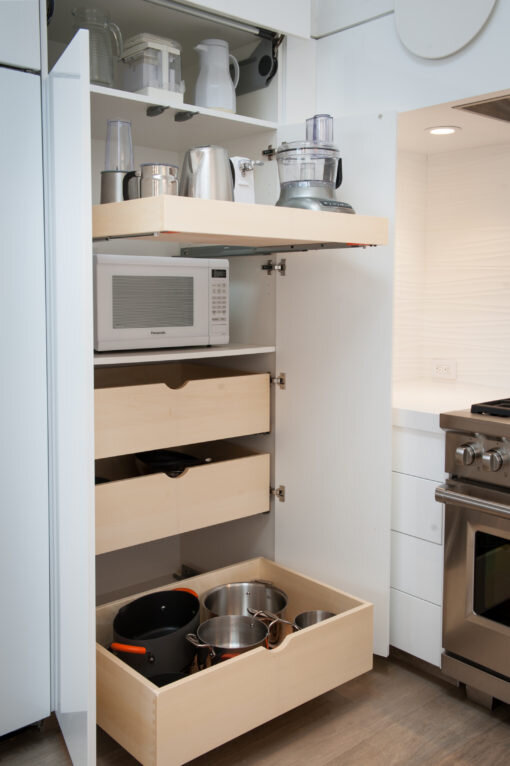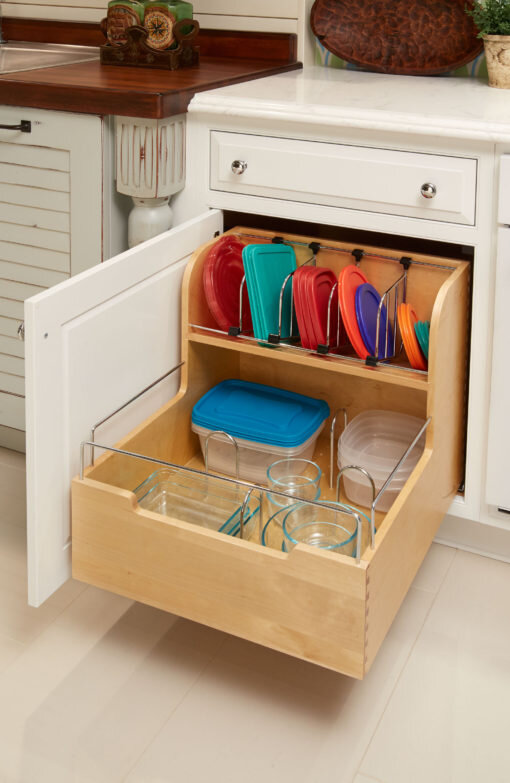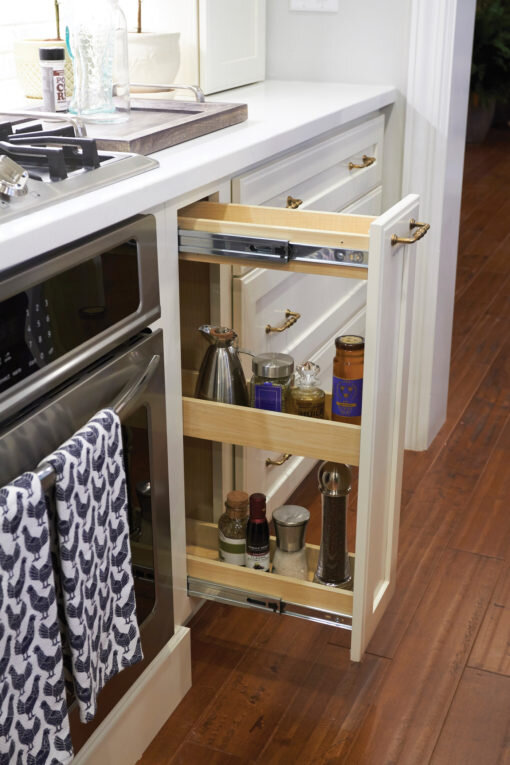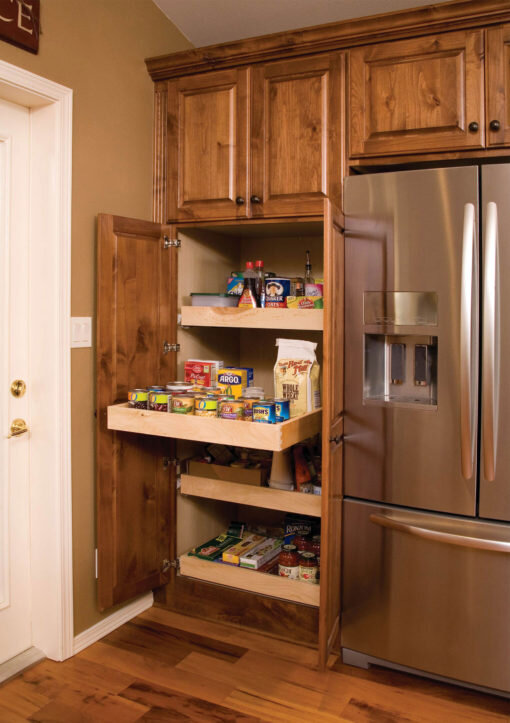Cabinetry 101
Remodeling a kitchen is a MAJOR undertaking and cabinetry is the biggest purchasing decision you will make.
Here are the top 5 things you need to know about purchasing kitchen cabinets:
Cabinetry 101
1. It’s all about the finish!
There are many, many cabinet makers/manufacturers out there that build beautiful cabinets. The finish that’s applied to the cabinet is ultimately what needs to hold up to daily wear and tear. Finishes have improved leaps and bounds over the last 20 years, however, a manufactured factory finish is still the best there is. Manufacturers use halogen ovens to cure each phase of the finish, something that is essential to the long term lifespan of your cabinetry.
2. What should you look for with regards to box construction?
There are a number of options when it comes to cabinet box construction, but the primary options are plywood or furniture board. Furniture board (particle board) has gotten a bad rap over the years, however, when it is used by a reputable manufacturer, backing it with a strong warranty, it is a perfectly acceptable material. The cons of furniture board (aside from the frowned upon “particle board” look) mostly have to do with the weight of the product itself. It’s heavier than plywood and harder for installers to install. Additionally, when cutting holes for outlets in cabinet backs, furniture board is messier to cut. Plywood offers a lesser weight, premium look (before countertops are installed) and a material that’s easier to cut when trimming or installing outlet holes. That’s it! Both materials are perfectly acceptable in the industry, both offer similar strength and both will result in the same manufacturer’s warranty. Keep in mind, that when the countertops are installed, you’ll never think about box construction again!
3. Faceframe, Inset or Frameless (European style), what’s the difference?
Faceframe
A face-framed cabinet is most common in the Midwest and features a solid ¾”(most of the time) face frame attached to the front of the cabinet box. This face frame gives the cabinet a traditional look and can offer opportunities to provide different looks by varying the overlay of the cabinet doors, in how much of the face-frame is showing.
Inset
Inset cabinetry is a variation of the traditional face frame cabinet. Doors and drawers are made to fit into the face-frame openings. This method requires a skilled craftsmen to build because the gaps between the face-frame and door/drawer need to be tight enough to not allow viewing of the cabinet interior when the door is closed, nor too tight to cause rubbing when the door/drawer is opened or closed. However, the look of well executed Inset cabinetry is classic, beautiful and timeless.
Frameless
Frameless, or European, style is less common in the Midwest, but is becoming more popular. Frameless cabinetry forgoes a face-frame and instead uses a thick cabinet box construction with an edge banded front edge of the cabinet box. Doors and drawers are then sized with maximum overlay, resulting in a clean, close to seamless look; this is essential to any contemporary style. Frameless cabinetry also adds the benefit of maximizing cabinet space due to no face frame and allows easier opening and closing of drawers. Have you ever opened a drawer full of hand towels or junk drawer, only to get stuck when trying to open it? Frameless cabinetry prevents this from ever occurring because there isn’t a face frame to snag items on.
4. Functional storage options are what make the cabinets work for you and the way you live!
There are an infinite array of cabinet designs and an additional infinite array of interior cabinet storage options. But which ones are right for you? Sure, you may know you want a pull out waste basket and spice storage, but how about those canned goods, cereal boxes, cooking utensils, pots and pans? Not to mention the pile of endless mess of plastic storage containers and the lids that never match! This is one of the reasons that hiring a kitchen designer is essential. They are trained to help you figure out what you need and what storage options will work the best for the way you live. It’s easy to become overwhelmed and having a designer by your side will help you wade through the seemingly endless options.
5. Look for a cabinet manufacturer that sells their products through a kitchen and bath dealer network.
This is key to finding everything we’ve talked about in 1 – 4. Cabinet manufacturers that sell through a dedicated dealer network insure that you will be in the hands of capable designers that will design cabinetry and spaces that are best for you. These manufacturers are then able to back their products with warranties and support for the lifetime of the cabinetry. Something that not only gives you, the homeowner, peace of mind, but also a guaranteed finished product/remodel that you will be able to enjoy for many, many years to come.








